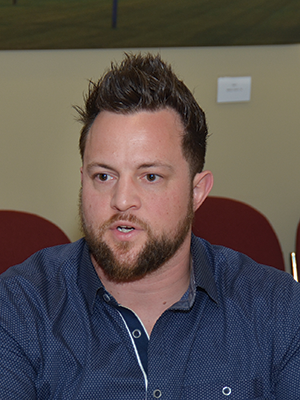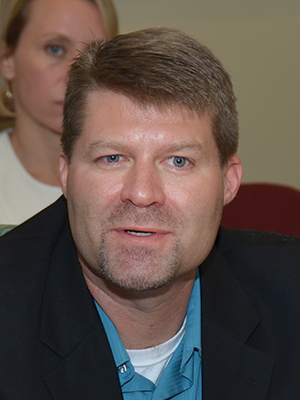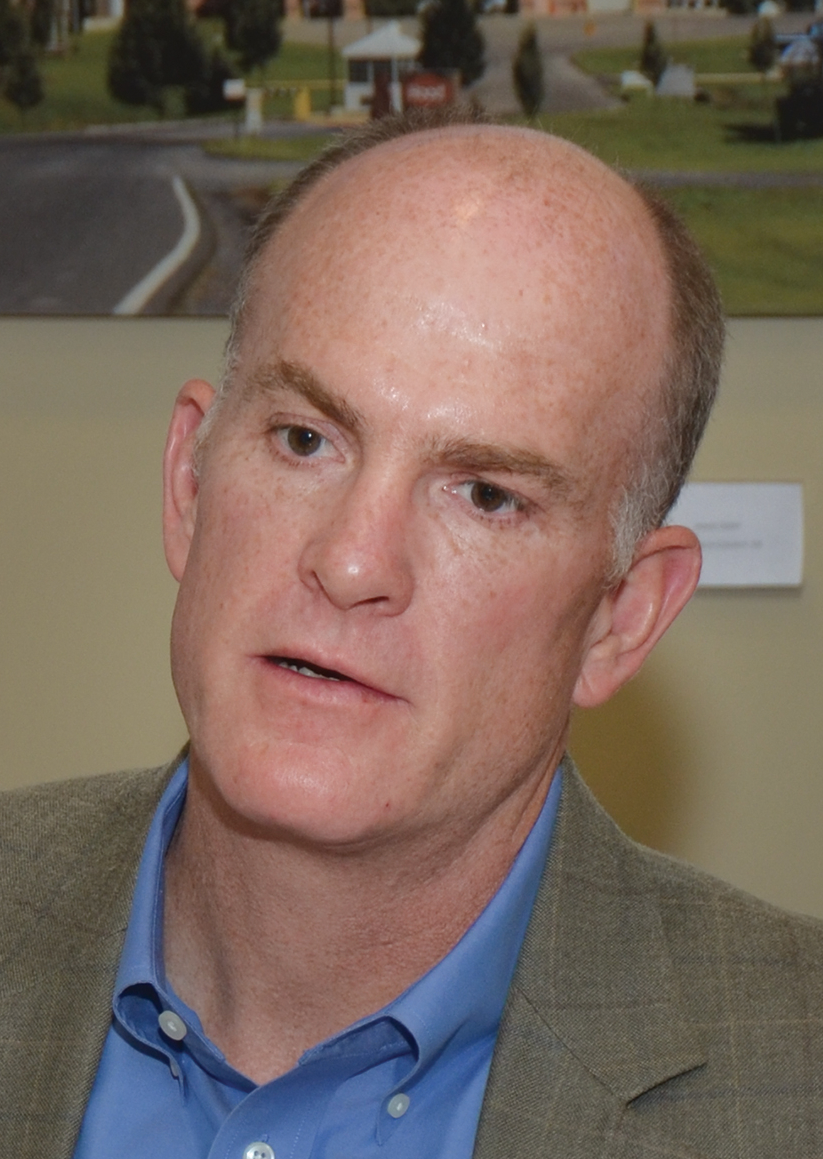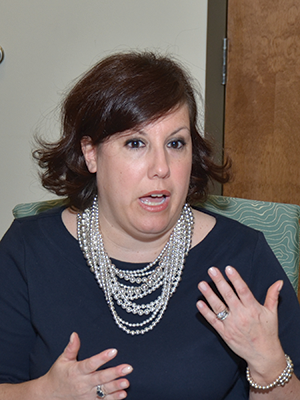Bull’s-eye on small business
Experts say hackers are preying on unprotected targets
Bull’s-eye on small business
Experts say hackers are preying on unprotected targets
In May, a “ransomware” attack locked up the data of more than 230,000 computers in over 150 countries around the world. Using a computer virus called WannaCry, hackers held the data for ransom, demanding their victims make payments of $300 each in bitcoin, a difficult to trace digital currency.
The incident was just the latest example of the large-scale business breaches that grabbed headlines in the U.S. and abroad.
In the same month that attack occurred, the giant retailer Target announced that it had reached an $18.5 million settlement with 47 states and the District of Columbia to resolve investigations into a 2013 breach that affected 41 million customers.
In March, two Russian intelligence officers and two hackers were charged in a Yahoo data breach affecting at least 1 billion user accounts.
Closer to home, MedStar Health, based in Columbia, Md., last year suffered a cyberattack that forced it to turn away patients and shut down computers at hospitals and other facilities.
Large businesses have beefed up their security in recent years. As a result, hackers increasingly are preying upon smaller companies that may not have robust cyber defenses.
How vulnerable are Virginia businesses to cyberattack risks?
To get answers, Virginia Business hosted a cybersecurity roundtable with a panel of seven Virginia experts from a wide range of industries.
The group included:
- Joseph DePlato, chief technology officer and principal cybersecurity architect with Bluestone Analytics in Charlottesville.
- Michael Hardin, vice president, risk management, at Apple Hospitality REIT in Richmond.
- Collin Hite, practice leader of the Cybersecurity & Data Privacy Group and the Insurance Recovery Group at Hirschler Fleischer in Richmond.
- David Inabinet, director of technology with Riverside Health System in Newport News.
- John Lewis, vice president of information technology at Lumos Networks Corp. in Waynesboro.
- Milos Manic, computer science professor and director of the Modern Heuristics Research Group at Virginia Commonwealth University’s School of Engineering in Richmond.
- Alyson Newton, vice president and Executive and Professional Specialty Practice leader with Marsh & McLennan Agency LLC (formerly Rutherfoord) in Richmond.
The discussion was held at the offices of Virginia Business in Richmond in late April. The following is an edited transcript.
VB: [What are] the biggest changes that you’ve seen recently in cyberattacks?

VB: Mike, what are you seeing?


VB: With the emergence of electronic medical records, is that a new issue?
Inabinet: Absolutely. You know they say your medical record is worth so much more on the dark web compared to a credit card. A credit card [theft] is kind of one and done, but with your medical record, especially someone who has some status, that’s worth a lot of money. Protecting that patient data is really job one.

Manic: I would like to add something. With the expansion of [internet of things] devices, everything talks to everything. It brings a great deal of comfort and luxury to everybody to do things remotely, which sounds really nice. The problem is interdependencies on a small or larger level. I organized the first [National Workshop on Resilience Research for Critical Infrastructures] about a year and a half ago [and much of the discussion concerned interdependencies]. We have a very hard and difficult time figuring out interdependencies.
VB: John, could you talk specifically about the threat to our infrastructure and how vulnerable that is to cyberattacks?
Lewis: I think everything is vulnerable if it’s a targeted attack. The big fear is — to Dr. Manic’s perspective — the interconnectivity of everything. Attacks can come in many ways. … I think a big challenge we have as a country, as an industry, is establishing industry-driven standards that everyone adheres to and then sharing weaknesses or sharing events. A lot of companies are really not willing to publicly announce, “Oh, we’ve had something bad happen. Hey, everyone, pay attention.” That may be embarrassing for a variety of reasons. Everyone is looking for guidance. There are lots of ideas, but there isn’t any mandated organization either from a government or from an industry saying, “We have to step up our game, and everyone has to follow this standard.”
Manic: We are not thinking enough [about threats] until something forces us to. Why? Because it costs. End of story … There’s something called fault tolerance. It’s a fixed algorithm: If this happens, I’ll do this. The problem is the approach is reactive. You’re talking about something you know has happened, which has no value tomorrow, because tomorrow is going to be a new day. So here we come to resilience, which is the idea of intelligent response or getting up after you fell down. It cannot be treated with the same algorithm because it’s going to be a different fall. That brings another facet … in this game, which is some kind of machine-learning. Trying to figure out how proactively what can go wrong, and if something goes wrong, trying to stay one, two, three, five steps ahead of the bad guys. So machine learning, artificial intelligence, call it any which way you like, I’ve been teaching and preaching about it for the last 15 years.
VB: Do we have enough people to combat these attacks? Is anyone having issues with trying to get cybersecurity professionals?
DePlato: I would say people are definitely interested in it, but it takes a specific mindset. You have to have a very analytical mind, want to solve puzzles and want to do deep analysis. In practice, what I’ve come across are a lot of managed-service providers who think that they can do security, and their idea of security is throwing some firewalls in place, putting some security appliances in place, and it ends there. And I’ve come across people that are in the cybersecurity realm that just like being known as a cybersecurity analyst or a professional hacker. But they don’t have that next level of knowledge. They don’t understand the long view or how to take an organization from where they are right now and get them to a point where they are secure and can actually defend against an attack.
VB: Mike, what about you? Are you able to find what you need?
Hardin: Well, personally for us, we rely heavily on the brands that we work with, and it’s more their role to hire and bring in those professionals. So they handle that for us. But we have an internal team that works together with everyone in our groups to make sure we’re staying ahead of the game, staying ahead of what’s coming. It’s a constant reminder that we do have to stay on top and ahead of these things and see what’s coming, make sure we’ve gone back and double-checked everything again, double-checked the training. We always want to be aware.

Inabinet: It definitely takes a special kind of person. You have to be a really good analyst and be curious and realize how things yesterday are not necessarily how they’ll be today. It’s a constant cat-and-mouse struggle with trying to secure these networks.
Lewis: From a talent perspective, we struggle finding the right talent. In a lot of cases, we’re always looking for people that have experience, and they are just hard to find. The good ones are already taken. You’re playing the compensation game. The really good ones will train up with you and then leave. That’s a challenge in itself. But even with the younger generation, the more tech is commoditized; there are fewer opportunities for people to really understand how technology works to get over the hump and start learning about protocols and learning how to beat systems. There are lots of people that have pretty résumés. You bring them in and talk to them, and they’re book smart. They’re not going home at night [to] read and dream about this and take things apart and ask why. It’s the people that are really willing to go above and beyond what they’re told to do and have initiative. That’s the hard thing to find.
VB: We’re going to talk a bit more about the insurance and the legal side of things. Alyson, how can small businesses protect themselves?

VB: Collin, would you like to add something here?

Newton: Just to piggyback on Collin’s point, that’s the importance for them to purchase the insurance. Something’s happened, and now we have to navigate this very complicated field of forensics, of regulatory compliance, of legal review, of public relations, where do we even start? And for a small business that might not have that experience or — with all due respect — that sophistication, it is very difficult for them.
VB: [How can insurance help with ransomware?]
Hite: Well, three things. One is, I think, ransomware has now allowed the price point to become a commodity. You can go on the dark web and buy the code to become a ransomware extortionist overnight. So that becomes the first problem. The second is, my understanding is, 20 to 35 percent of the criminal take is being reinvested in R&D by the criminals. They’re constantly evolving and that’s where insurance can step in. A well-placed cyber insurance policy will pay ransomware if you’ve purchased that aspect of first-party coverage and if you have a really good carrier. They have the forensic knowledge or the panel that will bring people in to help them pay it, get it paid, help get the system restored and do all of that. In the end, cyber insurance is the ultimate backstop on a lot of these costs and problems … And smaller companies, they need it. The Target can withstand an attack. [The retailer booked $162 million in expenses in 2013 and 2014 related to the breach.] The HVAC vendor was gone in about four weeks … These vendors are somewhat the weak link in the process. I had a presentation in front of a local client here recently who convinced themselves, “Well, we don’t take credit cards, we don’t deal with the public, we’re just a distributor.” And we talked a little bit more with the head of IT and the general counsel, and it suddenly became clear they’re tied into Kroger and Whole Foods for ordering. Well, you now own 100,000 customers because you’re tied into the grocery store systems for ordering. So you’ve got to get your people educated about their risks.
-
















